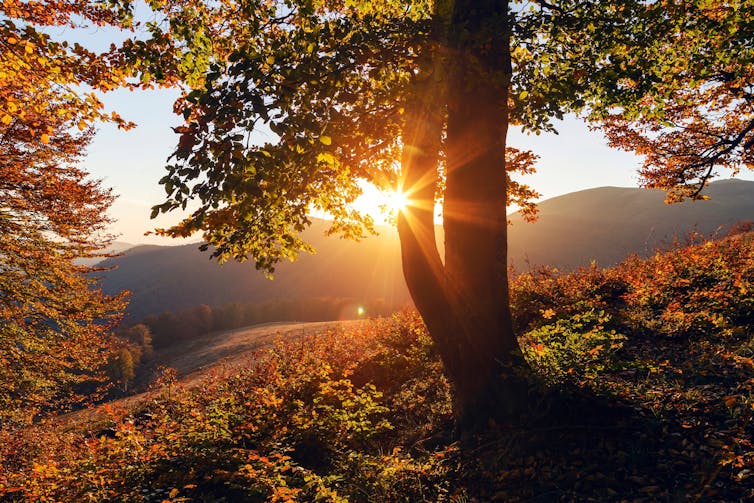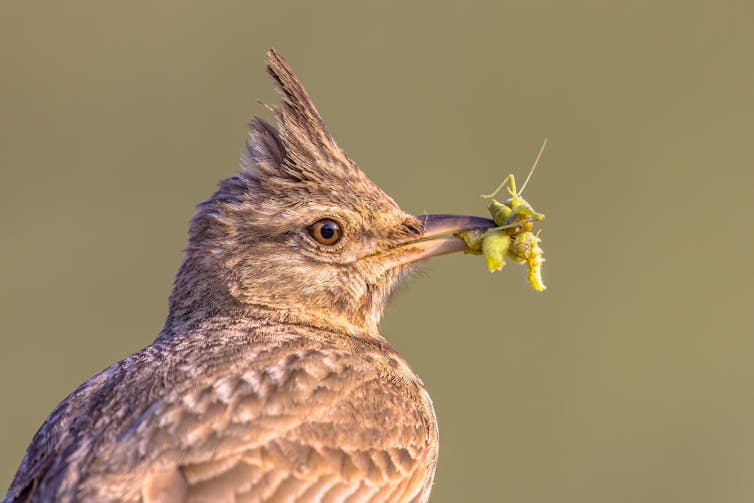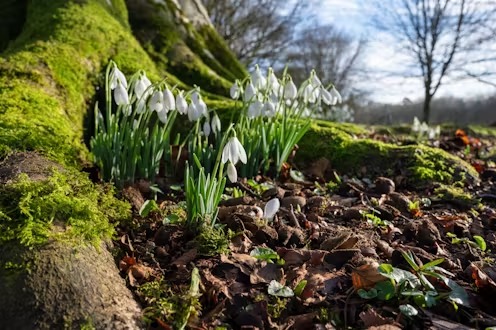The seasons aren’t what they used to be.
People who live in Earth’s middle latitudes are accustomed to a spring, summer, autumn and winter. If you’re in the northern hemisphere, you may have noticed plants flowering earlier than usual. It’s not your imagination: a 2022 study revealed that spring blooms are arriving a month sooner in the UK due to climate change.
For a new series on the seasons and how they’re being warped by a warming climate, over the coming months we’ll be examining the consequences of these wrinkles in nature’s calendar.
How plants sense the seasons
Other species can’t coordinate their activities around a date and time. Plants, the bedrock of most ecosystems, stay up to date by paying close attention to changes in light and temperature says Paul Ashton, head of biology at Edge Hill University.
Plants are among the first to know when the days start to contract in autumn, as they use a pigment called phytochrome to detect changes in red light.
“While this subtle shift escapes humans (our eyes are not sensitive to this part of the spectrum) a plant can detect this transition and start to change.”

Trees sense the onset of autumn by detecting subtle changes in red light. Brum/Shutterstock
“Just as the autumn can engineer a drop in the level of the hormone serotonin in our blood, a plant that has sensed winter’s approach will increase the production of a hormone called abscisic acid,” Ashton says. Abscisic acid makes deciduous trees shed their leaves and grow tough winter buds that are resistant to frost.
Temperature tells many plants when to start growing in the spring. Ashton says it isn’t clear how plants sense this, but again, pigments in their cells probably play a role.
“[Plants] sense the days getting warmer and alter their spring development in a manner akin to humans feeling warmth on their skin and so stepping out with fewer layers of clothing,” he says.
That’s where climate change has complicated things: rising air temperatures have yielded shorter, milder winters. Since 1986, plants in the UK now greet spring 26 days earlier, on average.
This relatively rapid shift has severed an arrangement plants and animals have negotiated over thousands of years.
“Insects that are used to feasting on April-flowering plants may find themselves arriving a month late if warmer temperatures mean that the plants now flower in March,” say Chris Wyver and Laura Reeves, PhD candidates who study pollination and climate change at the University of Reading.
Out of the loop
Hungry bugs are bad enough. But if insects are emerging too late to visit expectant flowers then it’s the entire ecosystem that suffers.
“Take, for example, the birds of European oak woods, such as the blue tit, great tit and pied flycatcher,” says Charlie Gardner, a lecturer in conservation biology at the University of Kent. Caterpillars are emerging earlier than they did in the past, and the birds that eat them can’t keep up.
“For every ten-day advance in caterpillar emergence, the birds are only able to bring forward their egg laying by three to five days, depending on the species,” he says.

Birds can only adapt so much to seasonal shifts in the emergence of their prey. Rudmer Zwerver/Shutterstock
Freak weather, a more common feature of our heating climate, can also confuse the finely calibrated senses of wildlife and trick some species into thinking the season shifted while they weren’t paying attention.
Stuart Thompson, a senior lecturer in plant biochemistry at the University of Westminster, highlights how the drought that parched Europe in 2022 convinced some trees to lose their leaves – giving the impression of autumn in mid-August.
Across the broader trends that scientists have documented at least one thing is consistent: winter is being squeezed from both sides as the world heats up.
“Climate researchers now have nearly five decades of satellite observations at their disposal,” says Jadu Dash, a professor of remote sensing at the University of Southampton.
“Analysis of this data reveals that spring has advanced by approximately 15 days, while autumn has been delayed by a similar amount.”
But climate change won’t simply usher in seasons where everything happens either a month earlier or later. Some species will delay hibernation and emerge in spring sooner, but others will stick to their original schedule, taking their cues from day length rather than temperature.
The result will be chaos, says Gardner:
“If we are to have any chance of preserving the living planet and avoiding the extinction of a million species, then we need to do more than stop climate breakdown. We need to invest in conservation too, to help wild plants and animals adapt to the changes we’ve already locked in. Not doing so would be bad news for all of us.”



 We combed through old botanical surveys to track how plants on Australia’s islands are changing
We combed through old botanical surveys to track how plants on Australia’s islands are changing  Tesla Poised for Breakout Year in 2026 as New Products and EV Market Reset Drive Growth
Tesla Poised for Breakout Year in 2026 as New Products and EV Market Reset Drive Growth  Fungi are among the planet’s most important organisms — yet they continue to be overlooked in conservation strategies
Fungi are among the planet’s most important organisms — yet they continue to be overlooked in conservation strategies  LA fires: Fast wildfires are more destructive and harder to contain
LA fires: Fast wildfires are more destructive and harder to contain  Parasites are ecological dark matter – and they need protecting
Parasites are ecological dark matter – and they need protecting  Extreme heat, flooding, wildfires – Colorado’s formerly incarcerated people on the hazards they faced behind bars
Extreme heat, flooding, wildfires – Colorado’s formerly incarcerated people on the hazards they faced behind bars  An unexpected anomaly was found in the Pacific Ocean – and it could be a global time marker
An unexpected anomaly was found in the Pacific Ocean – and it could be a global time marker 

































